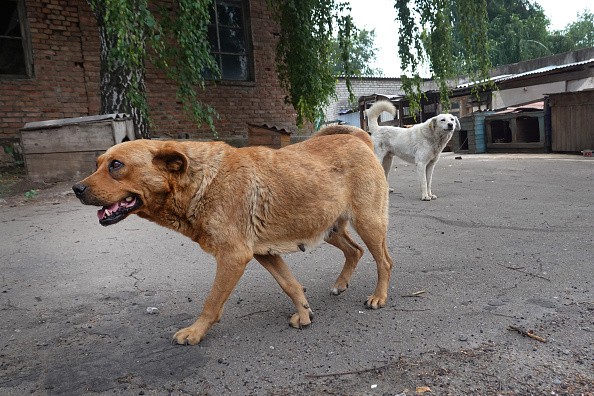Although the microbiome in the feces of dogs has been extensively studied, those investigations have mainly focused on domesticated dogs.
The microbiome is the accumulation of all microorganisms that live in the body. In a recent study, scientists collected fecal microbiomes from a variety of diverse populations to learn more about how they differ around the world.
Microbiomes
 (Photo : Scott Olson/Getty Images)
(Photo : Scott Olson/Getty Images)

All of the microbes that naturally inhabit our bodies and inside of us, including bacteria, fungi, and viruses, are collectively referred to as the microbiome, as per NIH.
Despite their small size, which makes them invisible without a microscope, microbes have a significant impact on human health and wellbeing. They help our immunity mature, defend us from pathogens, and allow us to properly digest food to release energy.
Since the microbiome is a crucial point of contact between both the body and the environment, these microbes have the potential to have a wide range of negative effects on health, including influencing how we react to specific environmental factors.
Other microbes serve as a buffer, reducing the toxicity of environmental substances. Some microbes modify environmental compounds in ways that would make them more toxic.
Read More: Breakthrough Study Shows How Gut Microbes Are Linked with Depression
Microbes in Dog's feces
The researchers gathered feces from three different geographical areas in order to sample a wide variety of microbiomes: dogs from a remote community in Laos, stray as well as shelter dogs in India, and pets from South Africa, as per ScienceDaily.
The samples were taken on FTA cards because they have chemicals that preserve DNA and allow for later sequencing and analysis.
According to a professor of animal and nutritional sciences, Kelly Swanson, the majority of our earlier research has focused on animals that visit veterinarians or are kept in research facilities; these animals receive vaccinations and eat processed food.
However, that is not the case for animals that live outdoors and are exposed to various environmental factors, like those in Laos. By conducting this research, we can discover what constitutes normal behavior among various global populations.
The dogs had diets in each location. The stray dogs probably scavenged human leftovers; the village dogs consumed regional agricultural goods, including maize, corn, bamboo, sticky rice, and fish from local rivers; and the pet dogs were probably fed commercial dog food. The dogs who had shelter were fed rice, lentils, yogurt, and also dog food.
It's interesting to note that while the microbiomes of the various populations varied, they all served the same functional purpose.
It was interesting to observe that although different microbiomes can exist, they all perform the same metabolic task. For instance, dogs ingesting dairy in the South African and Indian communities had various Lactobacillus species that, according to Yarlagadda, were likely involved in the same pathway.
In fact, the researchers found that the microbiomes of antiquated dogs closely resembled those of non-US populations, possibly as a result of similar diets and increased exposure to the environment.
If the diversity of the human microbiome will exhibit similar patterns in non-industrialized environments will be clarified by additional research.
Professor of anthropology Ripan Malhi (GNDP/GSP/IGOH) stated We want to find more information on ancient microbiomes in different dog species using sequencing methods from a previous study.
Given that we know what they consumed, we can conduct more comparisons to examine the impact of diet on the microbiome.
Related Article: Ocean Microbes: How They May Directly Impact Climate Change
© 2024 NatureWorldNews.com All rights reserved. Do not reproduce without permission.



![Climate Change is Reducing Dust Levels Worldwide as Arctic Temperature Warms [Study]](https://1471793142.rsc.cdn77.org/data/thumbs/full/70320/280/157/50/40/climate-change-is-reducing-dust-levels-worldwide-as-arctic-temperature-warms-study.jpg)

